#beets posts
Text
something about will downplaying the painting after mike's weird anti-hug behavior, when he had obviously brought it to the airport to give to mike



and then he hears the way mike calls something as innocuous as breakfast burritos "weird" and immediately looks down at the painting


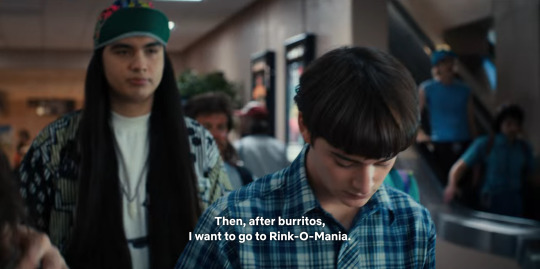
and when el says she wants the day to be all about the two of them, and mike agrees


he crushes it
#thinking about the the way mike made will feel that whole day thinking about ***#like he got there and it was s3 mike all over again in will's mind... this guy who only cares about his girlfriend and might call will#weird for making him a d&d painting this guy who can barely look at him and won't even give him a hug and doesn't seem to care#i'm in pain#byler#beets posts
5K notes
·
View notes
Text

Just doing my civic duty
#yes i just added this as a reblog to an old post. but i want ppl to see it in the dnp tags#so im posting it seperate also#dan and phil#dan and phil games#dan and phil beats#d&p#d&p games#daniel howell#phil lester#danisnotonfire#amazingphil#dan and phil beets#fan art#phanart#phandom#dnp#dnpgames
374 notes
·
View notes
Text
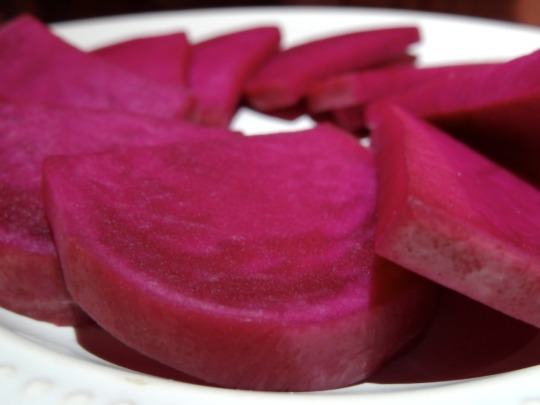
[ID: A circle of overlapping semi-circular bright pink pickles arranged on a plate, viewed from a low angle. End ID]
مخلل اللفت / Mukhallal al-lifit (Pickled turnips)
The word "مُخَلَّل" ("mukhallal") is derived from the verb "خَلَّلَ" ("khallala"), meaning "to preserve in vinegar." "Lifit" (with diacritics, Levantine pronunciation: "لِفِتْ"), "turnip," comes from the root "ل ف ت", which produces words relating to being crooked, turning aside, and twisting (such as "لَفَتَ" "lafata," "to twist, to wring"). This root was being used to produce a word meaning "turnip" ("لِفْتْ" "lift") by the 1000s AD, perhaps because turnips must be twisted or wrung out of the ground.
Pickling as a method of preserving produce so that it can be eaten out of season is of ancient origin. In the modern-day Levant, pickles (called "طَرَاشِيّ" "ṭarāshiyy"; singular "طُرْشِيّ" "ṭurshiyy") make up an important culinary category: peppers, carrot, olives, eggplant, cucumber, cabbage, cauliflower, and lemons are preserved with vinegar or brine for later consumption.
Pickled turnips are perhaps the most commonly consumed pickles in the Levant. They are traditionally prepared during the turnip harvest in the winter; in the early spring, once they have finished their slow fermentation, they may be added to appetizer spreads, served as a side with breakfast, lunch, or dinner, eaten on their own as a snack, or used to add pungency to salads, sandwiches, and wraps (such as shawarma or falafel). Tarashiyy are especially popular among Muslim Palestinians during the holy month of رَمَضَان (Ramaḍān), when they are considered a must-have on the إِفْطَار ("ʔifṭār"; fast-breaking meal) table. Pickle vendors and factories will often hire additional workers in the time leading up to Ramadan in order to keep up with increased demand.
In its simplest instantiation, mukhallal al-lifit combines turnips, beetroot (for color), water, salt, and time: a process of anaerobic lacto-fermentation produces a deep transformation in flavor and a sour, earthy, tender-crisp pickle. Some recipes instead pickle the turnips in vinegar, which produces a sharp, acidic taste. A pink dye (صِبْغَة مُخَلَّل زَهْرِي; "ṣibgha mukhallal zahri") may be added to improve the color. Palestinian recipes in particular sometimes call for garlic and green chili peppers. This recipe is for a "slow pickle" made with brine: thick slices of turnip are fermented at room temperature for about three weeks to produce a tangy, slightly bitter pickle with astringency and zest reminiscent of horseradish.
Turnips are a widely cultivated crop in Palestine, but, though they make a very popular pickle, they are seldom consumed fresh. One Palestinian dish, mostly prepared in Hebron, that does not call for their fermentation is مُحَشّي لِفِتْ ("muḥashshi lifit")—turnips that are cored, fried, and stuffed with a filling made from ground meat, rice, tomato, and sumac or tamarind. In Nablus, tahina and lemon juice may be added to the meat and rice. A similar dish exists in Jordan.
Turnips produced in the West Bank are typically planted in open fields (as opposed to in or under structures such as plastic tunnels) in November and harvested in February, making them a fall/winter crop. Because most of them are irrigated (rather than rain-fed), their yield is severely limited by the Israeli military's siphoning off of water from Palestine's natural aquifers to settlers and their farms.
Israeli military order 92, issued on August 15th, 1967 (just two months after the order by which Israel had claimed full military, legislative, executive, and judicial control of the West Bank on June 7th), placed all authority over water resources in the hands of an Israeli official. Military order 158, issued on November 19th of the same year, declared that no one could establish, own, or administer any water extraction or processing construction (such as wells, water purification plants, or rainwater collecting cisterns) without a new permit. Water infrastructure could be searched for, confiscated, or destroyed at will of the Israeli military. This order de facto forbid Palestinians from owning or constructing any new water infrastructure, since anyone could be denied a permit without reason; to date, no West Bank Palestinian has ever been granted a permit to construct a well to collect water from an aquifer.
Nearly 30 years later, the Interim Agreement on the West Bank and the Gaza Strip (also called the Oslo II Accord or the Taba Agreement), signed by Israel and the Palestine Liberation Organization (PLO) in 1995, officially granted Israel the full control over water resources in occupied Palestine that it had earlier claimed. The Argreement divided the West Bank into regions of three types—A, B, and C—with Israel given control of Area C, and the Palestinian Authority (PA) supposedly having full administrative power over Area A (about 3% of the West Bank at the time).
In fact, per article 40 of Annex 3, the PA was only allowed to administer water distribution in Area A, so long as their water usage did not exceed what had been allocated to them in the 1993 Oslo Accord, a mere 15% of the total water supply: they had no administrative control over water resources, all of which were owned and administered by Israel. This interim agreement was to be returned to in permanent status negotiations which never occurred.
The cumulative effect of these resolutions is that Palestinians have no independent access to water: they are forbidden to collect water from underground aquifers, the Jordan River, freshwater springs, or rainfall. They are, by law and by design, fully reliant on Israel's grid, which distributes water very unevenly; a 2023 report estimated that Israeli settlers (in "Israel" and in the occupied West Bank) used 3 times as much water as Palestinians. Oslo II estimations of Palestinians' water needs were set at a static number of million cubic meters (mcm), rather than an amount of water per person, and this number has been adhered to despite subsequent growth in the Palestinian population.
Palestinians who are connected to the Israeli grid may open their taps only to find them dry (for as long as a month at a time, in بَيْت لَحْم "bayt laḥm"; Bethlehem, and الخَلِيل "al-khalīl"; Hebron). Families rush to complete chores that require water the moment they discover the taps are running. Those in rural areas rely on cisterns and wells that they are forbidden to deepen; new wells and reservoirs that they build are demolished in the hundreds by the Israeli military. Water deficits must be made up by paying steep prices for additional tankards of water, both through clandestine networks and from Israel itself. As climate change makes summers hotter and longer, the crisis worsens.
By contrast, Israeli settlers use water at will. Israel, as the sole authority over water resources, has the power to transfer water between aquifers; in practice, it uses this authority to divert water from the Jordan River basin, subterranean aquifers, and بُحَيْرَة طَبَرِيَّا ("buḥayrat ṭabariyyā"; Lake Tiberias) into its national water carrier (built in 1964), and from there to other regions, including the Negev Desert (south of the West Bank) and settlements within the West Bank.
Whenever Israel annexes new land, settlers there are rapidly given access to water; the PA, however, is forbidden to transport water from one area of the West Bank to another. Israel's control over water resources is an important part of the settler colonial project, as access to water greatly influences the desirability of land and the expected profit to be gained through its agricultural exports.
The result of the diversion of water is to increase the salinity of the Eastern Aquifer (in the West Bank, on the east bank of the Jordan River) and the remainder of the Jordan that flows into the West Bank, reducing the water's suitability for drinking and irrigation; in addition, natural springs and wells in Palestine have run dry. In this environment, water for drinking and watering crops and livestock is given priority, and many Palestinians struggle to access enough water to shower or wash clothing regularly. In extreme circumstances, crops may be left for dead, as Palestinian farmers instead seek out jobs tending Israeli fields.
Some areas in Palestine are worse off in this regard than others. Though water can be produced more easily in the قَلْقِيلية (Qalqilya), طُولْكَرْم (Tulkarm) and أَرِيحَا ("ʔarīḥā"; Jericho) Districts than in others, the PA is not permitted to transfer water from these areas to areas where water is scarcer, such as the Bethlehem and Al-Khalil Districts. In Al-Khalil, where almost a third of Palestinian acreage devoted to turnips is located [1], and where farming families such as the Jabars cultivate them for market, water usage averaged just 51 liters per person per day in 2020—compare this to the West Bank Palestinian average of 82.4 liters, the WHO recommended daily minimum of 100 liters, and the Israeli average of 247 liters per person per day.
As Israeli settlement גִּבְעַת חַרְסִינָה (Givat Harsina) encroached on Al-Khalil in 2001, with a subdivision being built over the bulldozed Jabar orchard, the Jabars reported settlers breaking their windows, destroying their garden, throwing rocks, and holding rallies on the road leading to their house. In 2010, with the growth of the קִרְיַת־אַרְבַּע (Kiryat Arba) settlement (officially the parent settlement of Givat Harsina), the Jabars' entire irrigation system was repeatedly torn out, with the justification that they were stealing water from the Israeli water authority; the destruction continued into 2014. Efforts at connecting and expanding Israeli settlements in the Bethlehem area continue to this day.
Thus we can see that water deprivation is one tool among many used to drive Palestinians from their land; and that it is connected to a strategy of rendering agriculture impossible or unprofitable for them, forcing them into a state of dependence on the Israeli economy.
Turnips, as well as cabbage and chili peppers, are also grown in the village of وَادِي فُوقِين (Wadi Fuqin), west of Bethlehem. In 2014, Israel annexed about 1,250 acres of land in Wadi Fuqin, or a third of the village's land, "effectively [ruling] out development of the village and its use of this land for agriculture." Most of this land lies immediately to the west of a group of settlements Israel calls גּוּשׁ עֶצְיוֹן ("Gush Etzion"; Etzion Bloc). Building here would link several non-contiguous Israeli settlements with each other and with القدس (Al-Quds; "Jerusalem"), hemming Palestinians of the region in on all sides (many main roads through Israeli settlements cannot be used by anyone with a Palestinian ID). [2] PLO executive committee member Hanan Ashrawi said that the annexation, which was carried out "[u]nder the cover of [Israel's] latest campaign of aggression in Gaza," "represent[ed] Israel’s deliberate intent to wipe out any Palestinian presence on the land".
This, of course, was not the beginning of this strategy: untreated sewage from Gush Etzion settlements had been contaminating crops, springs, and groundwater in Wadi Fuqin since 2006, which also saw nearly 100 acres of Palestinian land annexed to allow for expansion of the Etzion Bloc.
All of this has obviously had an effect on Palestinian agriculture. A 1945–6 British survey of vegetable production in Palestine found that 992 dunums were devoted to Arab turnip production (954 irrigated and 38 rain-fed; no turnip production was attributed to Jewish settlers). A March 1948 UN report claimed that "[i]n most districts the markets are well-supplied with all the common winter vegetables—cabbages, cauliflowers, lettuce and spinach; carrots, turnips and and beets; beans and peas; green onions, eggplants, marrows and tomatoes." By 2009, however, the area given to turnips in Palestine had fallen to 918 dunums. Of these, 864 dunums were irrigated and 54 rain-fed. This represents an increase in unirrigated turnips (5.8%, up from 3.9%) that is perhaps related to difficulty in obtaining sufficient water.
Meanwhile, Israel profits from its restriction of Palestinian agriculture; it is the largest exporter of turnips in West Asia (I found no data for turnip exports from Palestine after 1922, suggesting that the produce is all for local consumption).
The pattern that Ashrawi called out in 2014 continued in 2023, as Israel's genocide in Gaza occurs alongside the continued and escalating killing and expulsion of West Bank Palestinians. The 2014 annexations, which represented the largest land grab for over 30 years and which appeared to institute a new era of state policy, have been followed up in subsequent years with more land claims and settlement-building.
Israeli military and settler raids and massacres in the West Bank, which had already killed 248 in 2023 before the حَمَاس (Hamas) October 7 offensive had taken place, accelerated after the attack, with forced expulsions of Palestinians (including Bedouin Arabs), and harassment, raids, kidnappings, and torture of Palestinians by a military armed with rifles, tanks, and drones. This violence has been opposed by armed resistance groups, who defend refugee camps from military raids with strategies including the use of improvised explosives.
Support Palestinian resistance by buying an e-sim for distribution in Gaza; donating to help two Gazans receive medical care; or donating to help a family leave Gaza.
[1] 918 dunums were devoted to turnips according to the Palestinian Central Bureau of Statistics (PCBS) report for 2009; the 2008 PCBS report attributes 253 dunums of turnip cultivation to Al-Khalil ("Hebron") for 2006–7.
[2] Today, Gush Etzion is connected to Al-Quds by an underground road that runs beneath the Palestinian Christian town of بَيتْ جَالَا (Bayt Jala).
Ingredients:
Makes 2 1-liter mason jars.
500g (4 medium) turnips
1 beetroot
1 medium green chili pepper (فلفل حار خضرة), halved
2 small cloves garlic, peeled
1 liter (4 cups) distilled or filtered water
25g coarse sea salt (or substitute an equivalent weight of any salt without iodine)
Some brining recipes for lifit call for the addition of a spoonful of sugar. This will increase the activity of lactic-acid-producing bacteria at the beginning of the fermentation, producing a quicker fermentation and a different, sourer flavor profile.
Instructions:
1. Clean two large mason jars thoroughly in hot water (there is no need to sterilize them).
2. Scrub vegetables thoroughly. Cut the top (root) and bottom off of each turnip. Cut each turnip in half (from root end to bottom), and then in 1 cm (1/2") slices (perpendicular to the last cut). Prepare the beetroot the same way.
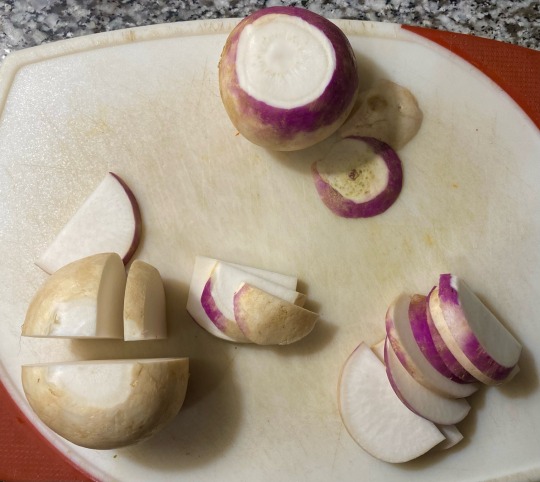
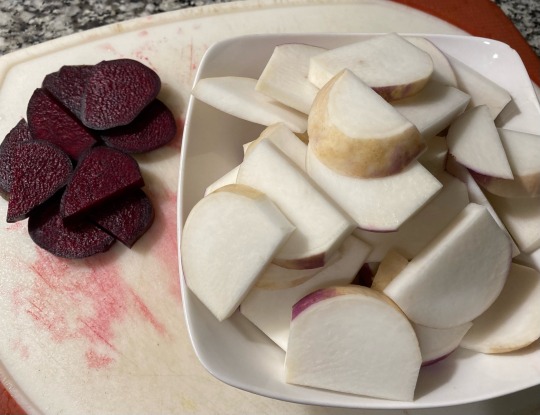
If you need your pickles to be finished sooner, cut the turnips into thinner slices, or into thick (1/2") baton shapes; these will need to be fermented for about a week.
3. Arrange turnip and beet slices so that they lie flat in your jars. Add garlic and peppers.
4. Whisk salt into water until dissolved and pour over the turnips until they are fully submerged. Seal with the jar's lid and leave in a cool place, or the refrigerator, for 20–24 days.

The amount of brine that you will need to cover the top of the vegetables will depend on the shape of your jar. If you add more water, make sure that you add more salt in the same ratio.

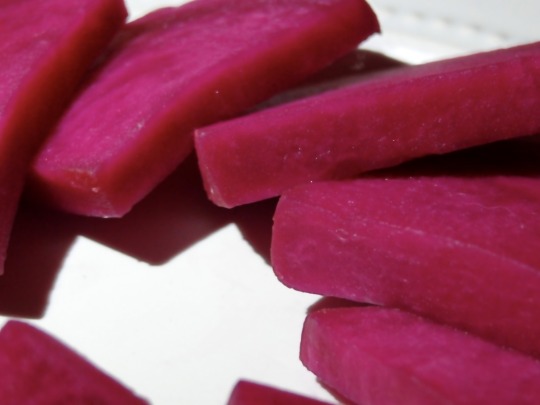
289 notes
·
View notes
Text
do you think maester luwin and jon had a cressen-stannis relationship. like 'jon, my sad sullen boy, son i never had, dont you know i have cared for you, how i have loved you, etc etc'
#chewing gnawing biting tearing#i need more stannis jon parallels discussion#the 17 year old beet collector and the 37 year old tax accountant would be best friends in another life#jon snow#stannis baratheon#cressen#luwin#my posts
278 notes
·
View notes
Text



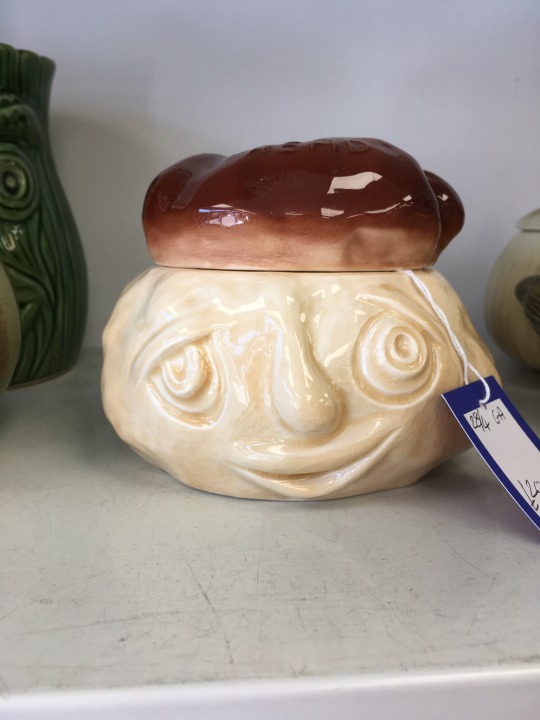

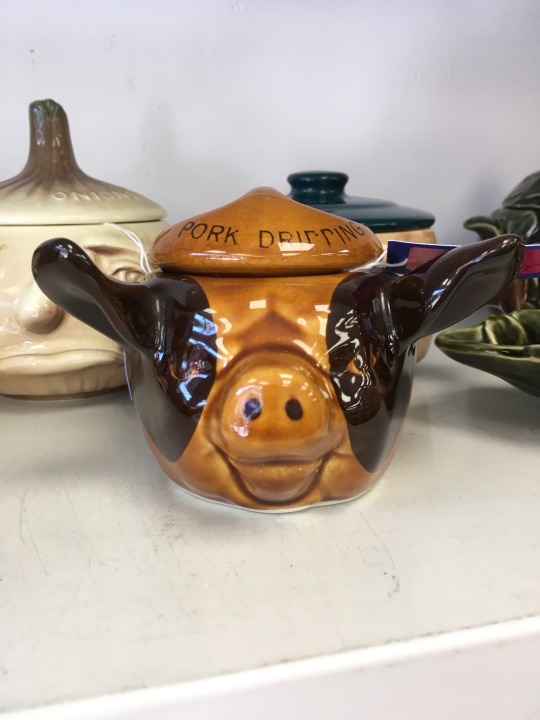


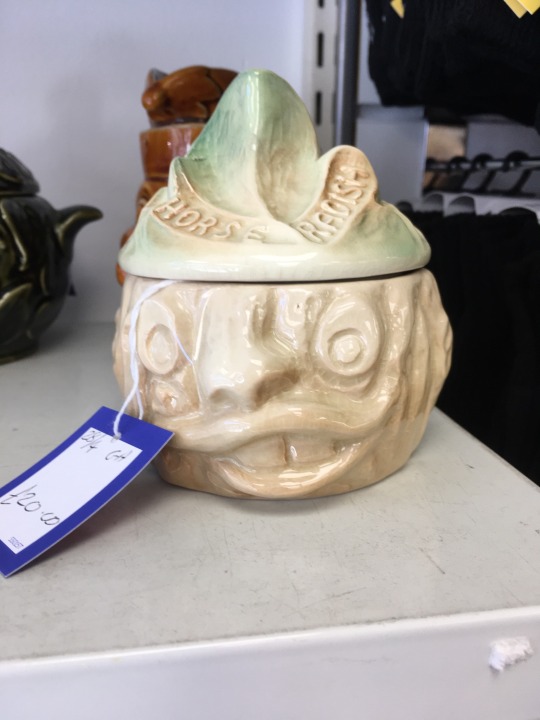
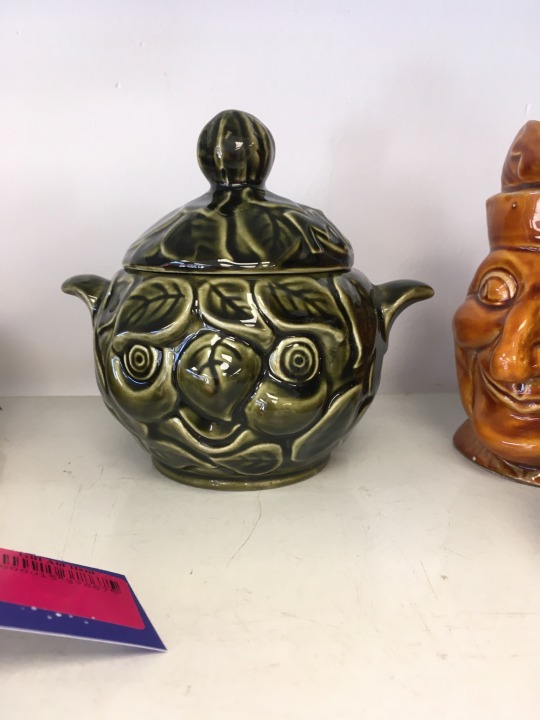
I found a huge collection of poots!!!
310 notes
·
View notes
Text

Trying to remain calm about this team but I think Go-Busters is probably one of my top series now
#tokumei sentai go busters#super sentai#go busters#red buster#blue buster#yellow buster#beet buster#stag buster#fan art#this drawing took me stupid long cause i was watching other series at the same time lol!#also i did draw each of their full figures because i was just having lots of fun with them#will probably post those later eehehe#anyway brb crying still aaahaha
145 notes
·
View notes
Text

"you wish. you wish you were me"
#langue de chat cookie#cappuccino cookie#capchat#langue de chat x cappuccino#cappuccino x langue de chat#cookie run#cookie run fanart#GHXHDLFJ I KNOW BEET JUST TAGGED ME IN A CAPCHAT POST I DREW THIS BEFOEE I SAW IT#i lovethem i dont know why i just feel like doodling them lately#my art
55 notes
·
View notes
Text

hav u ever noticed their hair is the lesbian flag together
#cand posts#cand arts#cookie run#cookie run ovenbreak#beet cookie#carrot cookie#lesbian#and that concludes cw wlw week!! ty all sm for enjoying my art for all of them!!#cr wlw week
415 notes
·
View notes
Text




frenchie's crop top in 2x01 ❤
#the boys#frenchie#vcugifs#theboysedit#tvedit#beet's gifs#my edits#userbaz#userk8#userkarolina#userbess#userdean#userfanni#usergiu#tuserjen#usersmblmn#ive had a rough week so im posting a little treat for me :)
87 notes
·
View notes
Text
planning on dyeing a bunch of white yarn in my stash with the onion skins I saved from the local farm last year, then knitting a vest out of it...planning even further ahead to try & dye yarn with some of their beets & marigolds too later this year... I think it'd be really cute to have an ongoing 'farm vest' project >:^)
#my parameters for natural dyeing are 1) is everything involved food safe 2) can i do it in my home#bcuz i am going to use our lobster pot & nobody is getting poisoned on my watch#onion skins can be used by themselves & you can use beets with just plain vinegar#marigolds i have to research more though. if the color needs an additive to stick that isn't safe & edible then it'll be a no go#not having any FUMES in the house#this'll be so fuuuun yayyy#figuring out where to dry yarn will be less fun but that's for robin in a week or two to figure out#dial p for post#my knitting
18 notes
·
View notes
Text

Today's Ace n' Mooch is OH GOD MOOCH STOP MUNCHING ON HIS HAND
#acen'moochdaily#ace uty#uty ace#mooch uty#uty mooch#undertale yellow#there's not that much Ace and Mooch content oof#so I have to resort to recycling my Beet n Ninja Cookie daily posts for them#mod chive
16 notes
·
View notes
Text

22nd……….. birthday………………..
379 notes
·
View notes
Text
Creamy Beet Pasta Sauce with Thyme

[image ID in ALT]
This recipe just popped into my head a couple of years ago, and it turned out just as good as I imagined it would! You don't have to stick with the amounts listed, it's not a finicky recipe and is easy to adjust to your preferences. I've put a really detailed version under the cut to save your dash. But here's a link to it if you prefer (and a link to the simplified instructions, though I suggest you read the detailed ones at least once since I added a lot of tips). As always, both imperial and metric measurements are included. You do need a blender for this, but it doesn't have to be one of those super fancy, expensive ones.
I know the photo isn't very good, but this is my first attempt at photographing food, and I was getting really hungry and just wanted to eat, lol! Though it shows just how vibrant the color of the pasta sauce is, which was the point.
Creamy Beet Pasta Sauce with Thyme
The recipe yields about 3 cups/750 mL of pasta sauce.
2 cups/500 mL chopped cooked beets (about three medium beets) (directions below – you can cook them ahead of time or use precooked ones, in which case see the note below about reheating it)
1 cup/250 mL raw cashews, soaked and rinsed (directions below)
about 1 teaspoon/5 mL minced or crushed garlic – or 2 to 4 cloves of garlic depending on their size and how garlicy you want it (keep in mind that as the directions are written the garlic is raw)
about 1 tablespoon/15 mL fresh thyme (see note at the end)
2 teaspoons/10 mL apple cider vinegar (see note at the end)
1 to 1 ½ teaspoons/5 to 7.5 mL sea salt or Herbamare
½ to 1 ½ teaspoons/2.5 to 7.5 mL fresh ground black pepper
about 1 ¼ cups/210 mL water
pasta – I generally go with penne for this sauce but this is your meal so follow your heart!
A) Rinse the thyme stems in cool water and place them on a kitchen towel to dry. You can fold the towel over the stems and gently pat down to speed up the drying process, thyme is pretty sturdy so you won’t wilt it.
B) Prepare the cashews. There are two ways to soak them, it doesn’t matter which you choose.
1) Slow method: Place the cashews in a bowl or container with a lot of room, cover them with 2 cups/500 mL water. Let them soak for 10 to 12 hours. They’ve soaked long enough when you can easily break them with your fingers.
Fast method: Place the cashews in a pot and cover with at least 2 cups/500 mL of water. Cook on a low boil for 20 minutes. (If you use this method, pick a pot big enough to cook your pasta in, then you only have one pot to wash!)
2) Drain and rinse the cashews a few times with fresh water.
C) Cook the beets. You can use whatever method you’d like, but I recommend roasting them because it’s easy and retains most of the nutrients. Plus, I haven’t found a faster way to peel them. Though this method seems to work best with fresh beets that still have the greens attached.
1) Preheat your oven to 400℉/200℃.
2) Cut the greens off the beets and rinse off any dirt.
3) Wrap each beet in aluminum foil and place on a baking tray or pan.
4) Bake for 45 to 90 minutes, until a fork can easily be stuck into them all the way to the center.
5) Let them cool long enough to handle, about 10 to 20 minutes, then cut off the ends.
6) Under running cold water push the beet skins off. They should come off really easily without much force or pressure.
7) Chop the beets into smallish cubes – about ¼ inch/0.5 cm – for easier blending.
D) As the beets are cooking (and the cashews if you choose the fast soaking method), destem the thyme until you have around 1 tablespoon/15 mL of thyme leaves.
E) Start cooking your pasta. Of course the timing of this depends on your pasta of choice and how long it takes. But if multitasking is too stressful, cook the pasta once you’re done with the sauce.
F) Throw everything (except maybe the thyme – see #2) in the blender and blend until creamy.
1) Use the smaller amounts of the garlic, thyme, salt, pepper, and water at first. That way you can adjust it to your taste as you go.
2) You might not want to blend the thyme in. If you want stronger thyme flavor, a fully creamy sauce, and a deeper, less vibrant magenta color than blend it in. But if you’d like a lighter thyme flavor, are fine with the texture of the leaves, and want a bright magenta sauce, add the thyme after you’re done blending it. (For reference, the photo shown has the thyme blended in.)
3) Blend until everything is nice and creamy and the seasonings and thickness are adjusted to your preference. You’ll have to stop the blender and scrape down the sides every now and then.
4) That’s it, your sauce is done! Now just plate it up with your pasta of choice! You can sprinkle some of the thyme on top to make it look extra pretty!
This keeps well in the fridge for several days, at least up to four. When you reheat it, make sure you don’t cook it. Just get it warmed up enough to keep it from making your pasta too cold. I find it warms up really well in the microwave, but I’m sure the stovetop works well too. I have no idea if this freezes well or not, because I always eat it up too fast to try, lol!
Note about Thyme: Normally I’m a dried herb person but this recipe just wouldn’t be the same with dried thyme. So do yourself a favor and buy the fresh this time (lol). If you don’t know what to do with the rest of it, just tie the stems up with a bit of string or thread and hang it somewhere out of direct sunlight and let it dry. It should be dry in a few days to a week. You can easily take it off the stem by running your fingers down it, against the direction the leaves grow. Now you can put it in a jar and you have no wasted thyme!
Note about Apple Cider Vinegar: You might be tempted to skip this, but please don’t! When you are using plants to replicate the creaminess of dairy, you need to add a bit of acid since dairy is acidic. You can replace it with other acids but your results may vary. Lemon juice is a poor substitute here in my opinion, and you need to use more of it. You could use balsamic vinegar, but you probably need more of that too, since it’s not quite as tangy as apple cider vinegar. The point isn’t to taste the vinegar, but to add that bit of acidity it really needs to shine.
#here's a very pretty pasta sauce just in time for Valentine's day#it's not a hard recipe but there is a bit of planning involved#make sure you have enough cashews before you start -- because I didn't yesterday and husband had to quickly buy more lol#fingers crossed the formatting doesn't go to hell when I post this#creamy beet pasta sauce with thyme#pasta recipes#recipe#vegan recipes
13 notes
·
View notes
Note
🔥 Unpopular 5D's opinion?
BROTHER THIS WHOLE BLOG IS AN UNPOPULAR 5DS OPINION. 5DS SEASON 2 NUMERO UNO!!!!!!!!!!!!!!!!!!!!!!!!!
(but for realsies: a lot of 5ds fans really adamantly act like s1 and s2 fare these two completely different shows, and while i do think season 2 has many flaws and is. Clumsily Written In A Lot of Areas to Say The Least, to act like these two parts have nothing in common with each other is a disservice to the 5Ds' themes on the whole (and also season 1 has its stretches that clumsy and kind of a slog too let's be real. i know youre not going to bat for the four (4!!!!) fucking episodes of monkey duel spirit world dark signer meanderfest. come on now.)
dawg it's all about what makes someone a person it's all about how the bonds we have with one another can prevail in the face of external antagonistic forces both ancient (Earthbound Immortals) and distant future (Iliaster) it's all about how the dead can walk again in many a way it's all about how you'll always have someone at home who loves you. god i fucking love 5D's.)
#ygo posting#BOTH SEASONS ARE ALSO ABOUT COOL DRAGON. THIS IS INTEGRAL#asks#dana's ygo bible study#anonymous#idk just when i see people jokey joke like 'teehee just stop watching 5ds after s1 the rest doesnt matter!!' IT BOILS MY BEETS A BIT#THERE IS SO MUCH WORTHY OF MERIT BACK THERE IF YOU CARE TO LOOK!!!!!!!!!!!!!!!!!
16 notes
·
View notes
Text
Recent finds:
This sweet grandma badger figurine
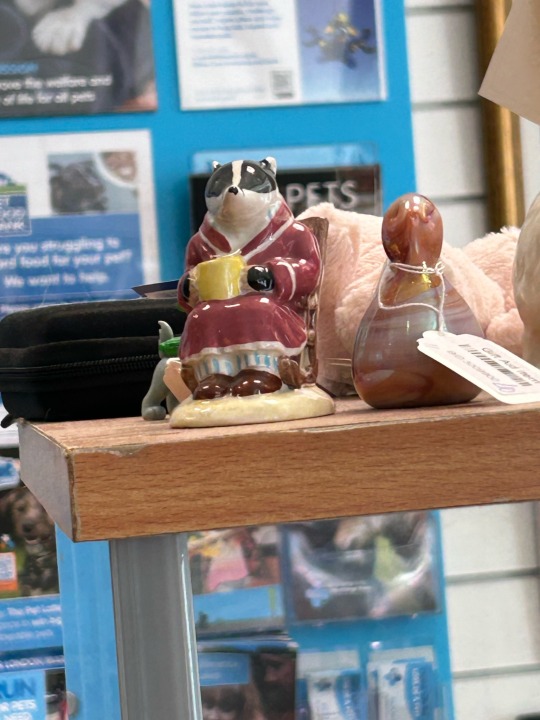
This meerkat dressed as batman

Onion poot! This was my first time seeing any beetpoot-esque dishes in the wild.

A book I genuinely considered getting for my grandpa

1980s potato kids. Apparently

An unnecessarily gendered couples’ game

And, saving the worst for last, some concerning dish towels. There were hundreds of these.


I didn’t end up buying any of these. All found in various shops in Hampshire, England.
#thrifting#shiftythrifting#submission#signs#games#gendered shit#toys#long post#beet poot#beet poot and friends#books
228 notes
·
View notes
Text
Beet is so she/he to me. Love this bigender thang.
16 notes
·
View notes